This exhibition project was inspired by the experience of Edwin’s father’s death by assisted suicide.
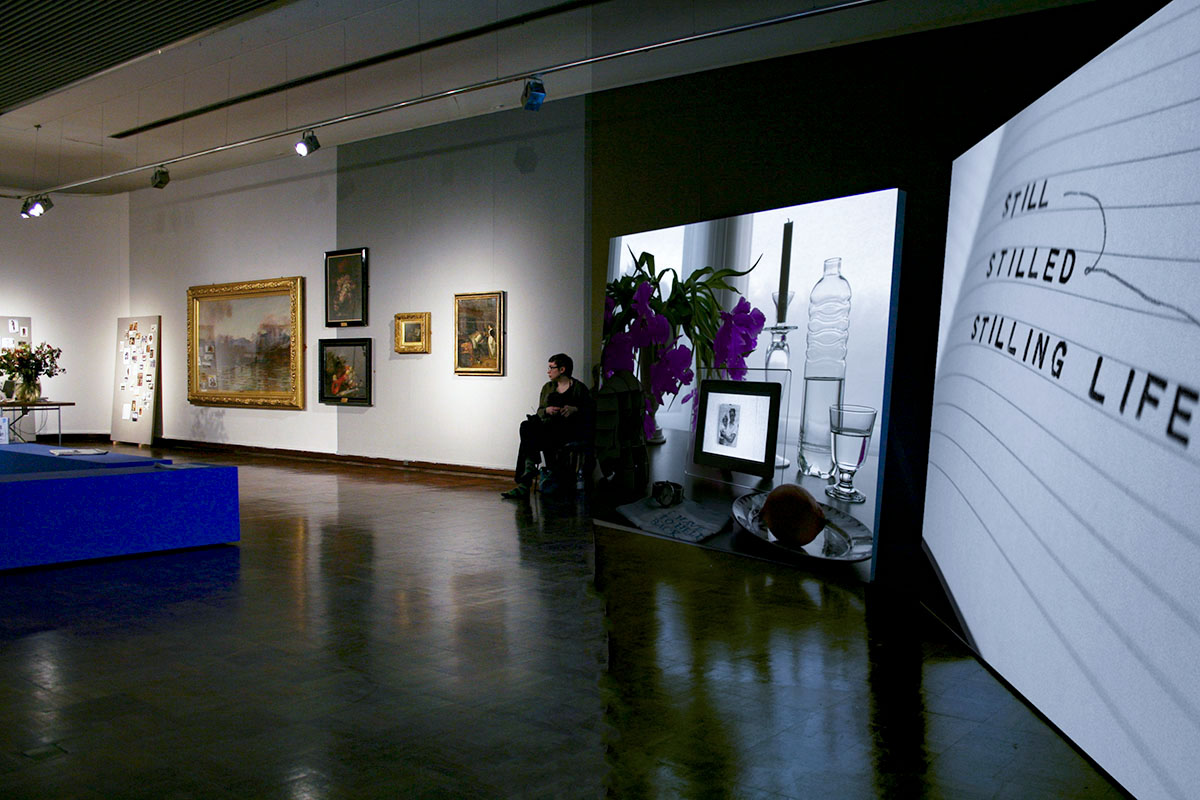
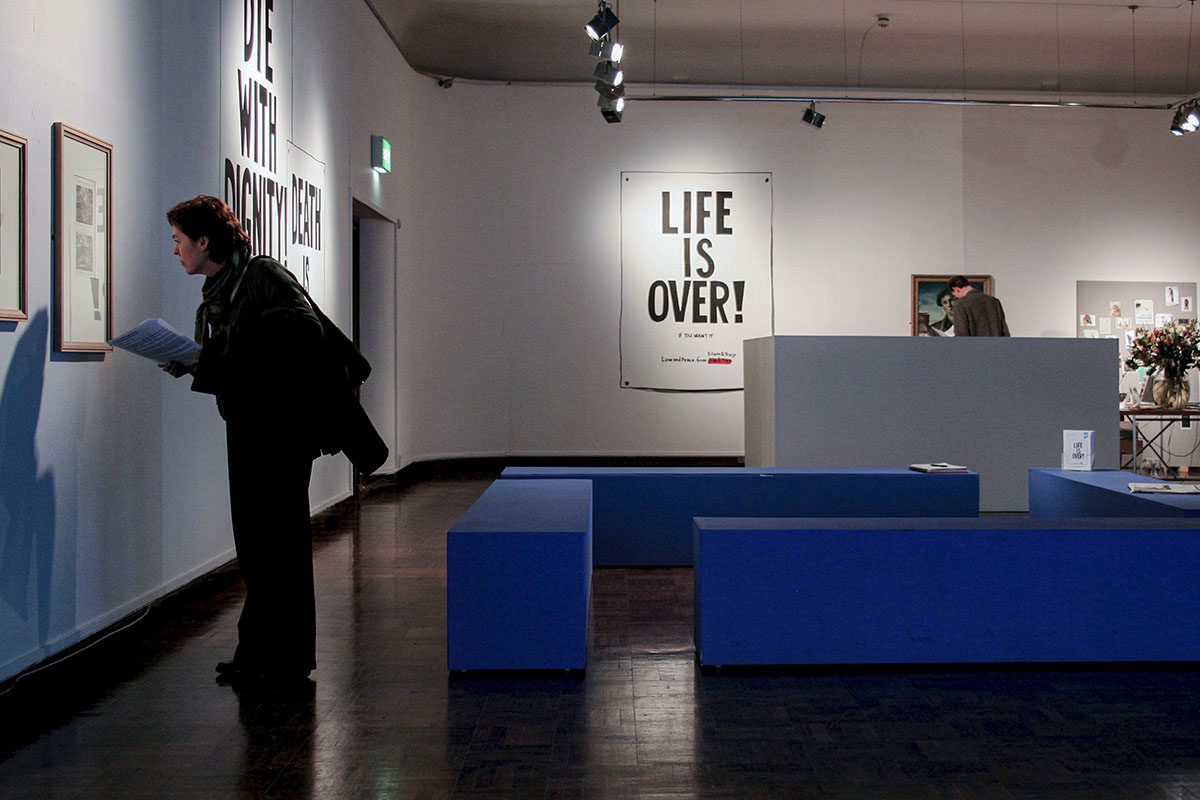
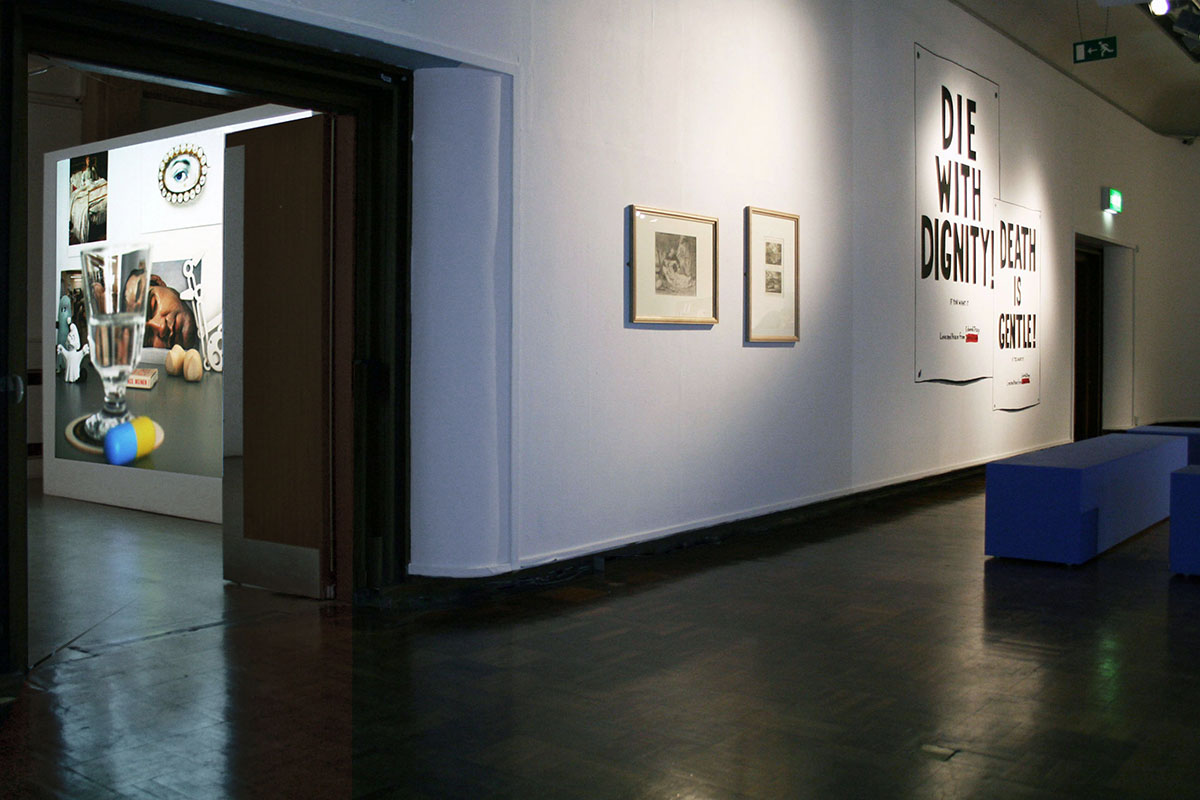
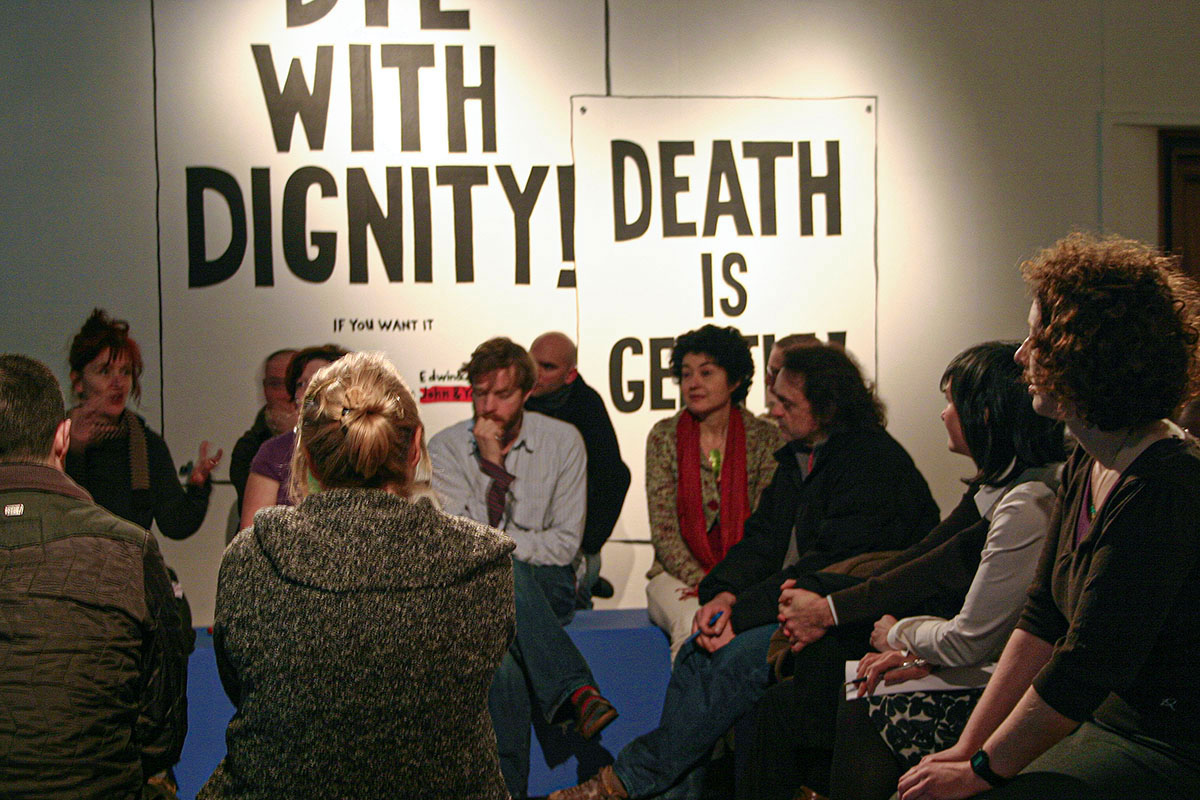
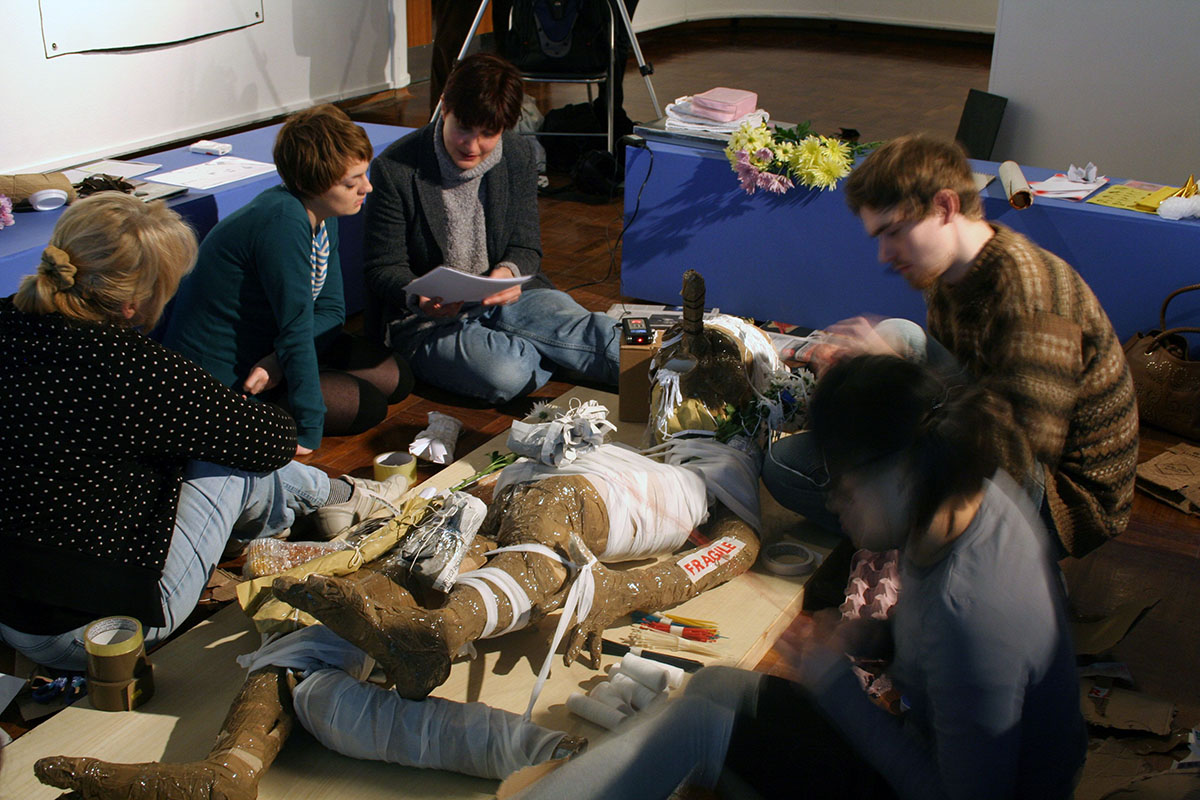
Taking the familial experience of Edwin’s father’s death by assisted suicide in the Netherlands as a guiding narrative, this 2009 exhibition project looked at the range of issues around contemporary death, how artists have interpreted death throughout history, how objects and images impact on people’s ideas about death and the role that art can play in mediating issues of life and death.
Life is Over! if you want it was created as an environment where a variety of narratives could be released, co-exist and develop. A visual narrative was established through the placement of new slide projections in conjunction with borrowed historical artworks, and new wall drawings. A purpose-designed environment integrated these elements with a public studio where we worked each day, and a series of public events. The exhibition project brought together production, presentation, exchange, research, teaching and reflection by foregrounding collaboration, interaction, curatorial practice, (personal) histories and interpretation.
Central to Life is Over! if you want it were two large-scale slide projections. The single work, Life, Death and Beauty: The Invisible Looks Back – Fear, No Fear, 2009 comprised two elements, one complete at the start of the project: a still-life with objects such as a vase with purple tulips, Edwin’s father’s watch and a changing series of photographs within a photographic frame. The other was developed daily over the period of the exhibition. Written by Tracy while present in the gallery, excerpts of conversations with visitors, and her own reflections on the subject of life and death were photographed and projected each day.
A second projected work, Life, Death and Beauty: Where Darwin Meets Courbet, 2009 showed Tracy & Edwin’s personal collection of art historical and contemporary reproductions and objects, on the theme of life, death and beauty, assembled in the studio during the research and production phases.
A public events programme located within the gallery included a multidisciplinary symposium ‘What role can art play in mediating issues around life and death?’; a seminar focusing on the relationship between place, architecture and suicide; a lecture ‘Contemporary art practice as a site for production, social engagement and reflection’; in-conversation gallery discussion between the artists and UK public collections organisations ‘Artists’ perspectives on mortality: life and death’; a PhD-led Master of Fine Art students’ collaborative performative response to Life is Over! if you want it, ‘Exquisite Corpse; a Contemporary Unfolding’.
Life is Over! if you want it: projections, wall drawings, historical artworks, public studio for presentation, exchange and production, events programme at Cooper Gallery, Duncan of Jordanstone College of Art & Design, University of Dundee, Scotland.
Supported by the Wellcome Trust and Duncan of Jordanstone College of Art & Design Research, University of Dundee.